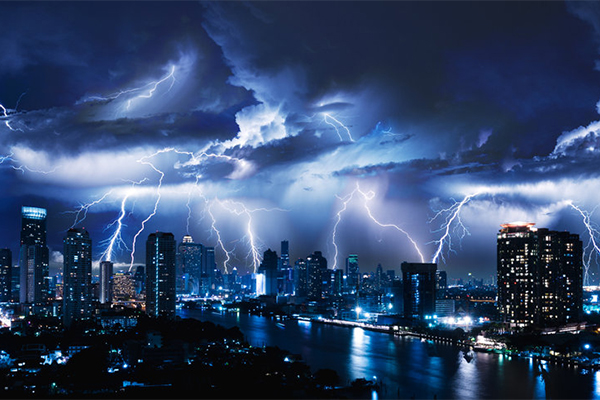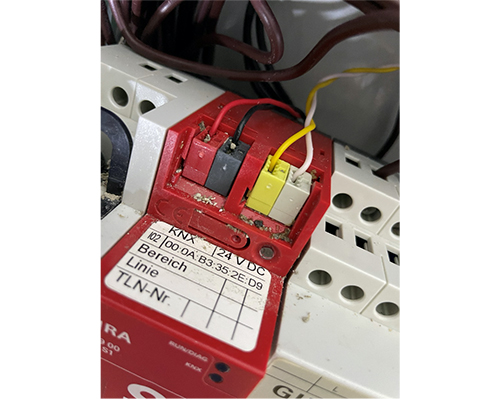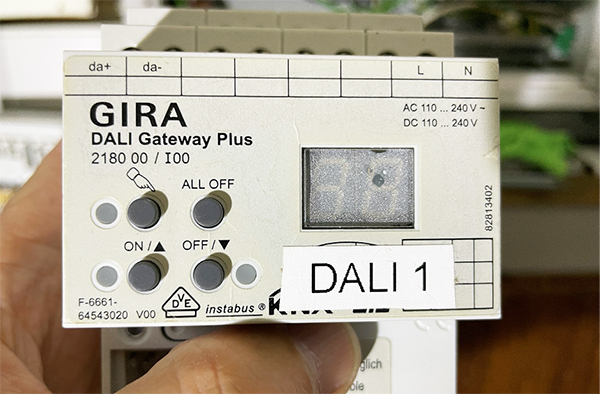
As more of us are faced with extreme weather events, Simon Buddle looks at ways in which KNX professionals can best prepare for emergency call-outs.
How was your summer? For most, I suspect it was a bit of a damp squib. For others, however, it may have felt considerably more dramatic.
This summer has brought some sudden and unexpected catastrophes. Flooding has been little short of devastating, and yet limited to certain areas. I don’t recall seeing such huge volumes of water falling from the skies ever before in such a short space of time. This type of flash flooding feels new to me – this is most definitely a new experience.

With climate change, certainly KNX has a part to play in creating more energy-efficient homes, and that has been well documented over the years. Intelligent control systems will become increasingly important as we move towards renewable energy sources and the need to change energy sources based upon time, cost, consumption, or availability.
When it all gets too much
The tragedy that unfolded for two of my customers was both unforeseen and, by and large, unstoppable. For one, a near 40m wide garden that gently slopes towards the house turned into an avalanche of water and debris as everything raced downhill. Two basement skylights were breached with the water cascading into ceilings and then down into rooms. All we could do was to isolate the power and wait for it to end. Another house watched in horror as water came back up through the drains and began its journey through their doors and into the basement. At one point the basement was knee deep in water. The whole event took less than an hour, but it will take months to dry out and repair.
Sadly, the KNX panel took the brunt of the electrical damage as we were not able to isolate it in time. I’m not sure it would have mattered anyway, as one of the cable runs that had been core-drilled through the basement concrete became a conduit for the incoming water to pour directly into the panels.

Mitigation with KNX
Are we as installers prepared for such events? Possibly not in so far as being proactive, but more by accident rather than design, I was able to help. And I was able to help because of the core strengths of the KNX system, namely distributed intelligence, backbones, and line couplers. Thanks to the system architecture, I was able to get much of the house back up and running.
It is worth saying that, whilst catastrophic, these events do not compare to some of the truly horrendous ordeals that people must endure around the world. But for those that suffer them, for that small period, they are all-consuming and very distressing.
I threw all my spare KNX modules, actuators, cables, and anything vaguely electrical into the van and headed out. I was able to disconnect the basement line, replace the system power supply and install a loan DALI module. With a couple of other swap-outs, changing a Zennio relay module for a Theben one, I enabled some basic control of blinds and the boiler. So after around about five hours we had successfully stood up 80% of the building. Importantly, the house was now usable for the clients.
Planning for disaster
As installers, I don’t think we can ever be fully-prepared for such an event. Going forward, the likelihood is that we’ll see more and more of these freak weather events. So, at the most basic level, we might consider holding a little more stock of the essentials in order to enable us to react quickly if/when it happens again. This might include system power supplies and a couple of the most-used actuators, a relay output and one of your favourite DALI modules.

And from a design perspective, there’s certainly a discussion to be had at the beginning of any project about spares that should be thought about for the system. I look at the most obvious critical problem, that is, ‘What single points of failure are there in this system?’ If a four-channel dimmer goes down, it’s not the end of the world. But a power supply, DALI module and/or a relay module driving the pumps, valves and boiler? Those will create major issues. Should spares be held onsite?
Conclusion
At its core, KNX is uniquely simple. And yet creating complex systems is just a question of adding more and more modules. The architecture remains identical. The distributed intelligence is a fantastic benefit and the idea that we can swap out one manufacturers’ module for a similar one from a completely different company gives us huge flexibility. If part of the system is damaged, we can simply disconnect it and the rest carries on working as normal. With a few spares in the van, we can pretty much get any system up and running. The benefits of the KNX open protocol, open architecture and its brand-agnostic nature cannot be overstated, nor just how powerful that makes it in times of adversity.
Simon Buddle CEng MIET, is a consultant for Future Ready Homes, a specialist in BMS and ELV services system design.












